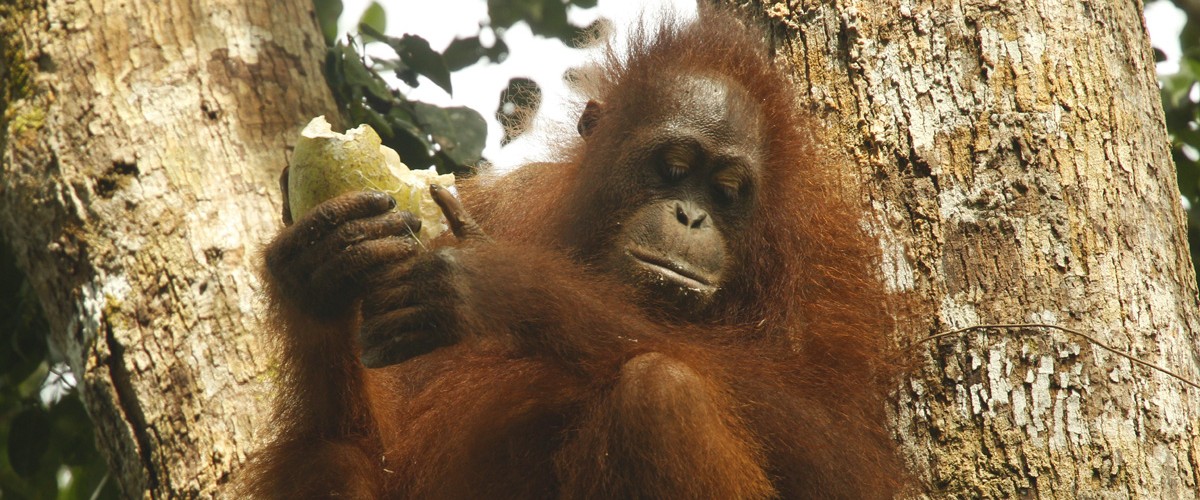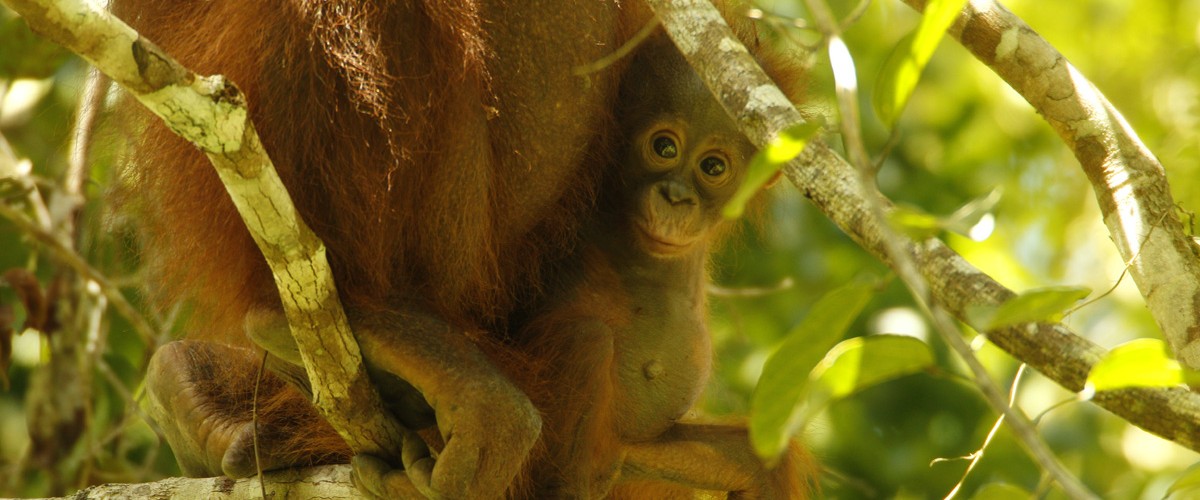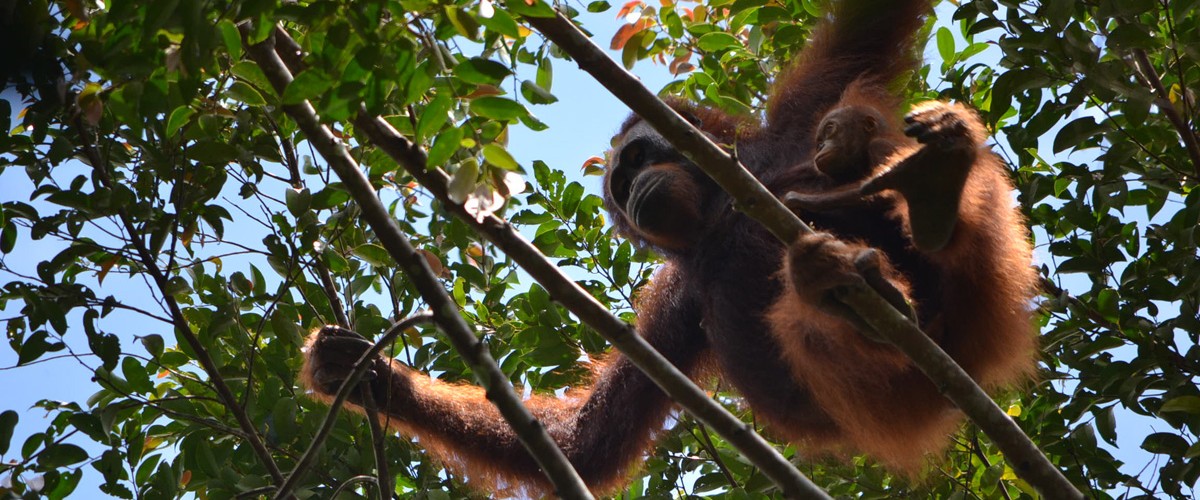Hello Code Red readers! My name is Natalie Robinson and I am a recent graduate of Boston University (BU), where I studied Biological Anthropology and Mathematics. During my time at BU I had the opportunity to learn and work under the guidance of Dr. Cheryl Knott. This past year I conducted a Senior Research Thesis in which I studied the concentration of free simple sugars in orangutan foods. I worked in the Boston-based lab using plant samples collected from Gunung Palung National Park. Now, after many hours spent analyzing samples from afar, I have the privilege of spending a year at Cabang Panti where I get to experience field research first-hand.
I have quickly learned that no matter how much I tried to prepare for this experience by studying orangutans in class, analyzing samples in the lab, and reading articles about the Kalimantan rainforests, I knew next to nothing upon my arrival. During my first groggy 4 AM follow I was instantly humbled by the field assistants and their ability to navigate through scarcely-marked trails in the dark with no map, identify tree species through smell and feel, and find and follow orangutans by paying close attention to the sights and sounds. Also humbling was getting pooped on as I rushed to collect orangutan fecal samples and neatly scoop them into test tubes or measure the smelly mass with a thermometer.
|
|
|
Yogi, Dang, Syai, Udin and I pose for a dramatic photo-op before dinner. Photo credit Natalie Robinson.
|
My first few orangutan follows were spent watching Bibi and her infant Bayas. I later realized that these focal individuals were much easier to keep track of than others that I would come to know. They slept in late, stuck close together, came low in the tree canopy, and were incredibly photogenic (evidence below). Rossa and Ronnie, the next ibu-anak (mother-offspring) pair that I followed, behaved the exact opposite. They woke up when it was still dark out, separated from each other for hours (and once even nested separately), hid high up in the trees, and loudly broke branches that came crashing down on us. They also traveled through the swamp, thick with rattan plants which easily rip through clothes and skin. I quickly understood what hard work this could be.
|
|
| Bayas peeks over his mother’s shoulder as she feeds in the canopy. Photo © Russell Laman. |
Despite bruises, blood, and lots of sweat, my biggest self-proclaimed accomplishment so far has been finding an orangutan “party” of Bibi, Bayas, and Berani (Bibi’s older daughter) on a solo search. After I found the party we were able to follow and collect data on Berani for a few days.
During my time spent back at camp, I work in the lab where the collected samples are processed. Each day I’m greeted by macaques and gibbons, and immaculate spider webs though the open window. While I’m here I will be conducting research on parasite prevalence among orangutans, as parasites can be indicative of population health. Parasites, which can be transferred through the oral-fecal route or by direct contact with contaminated surfaces, can be quantified by collecting fecal samples and observing the number and variety of organisms in the sample through a microscope.
|
|
|
An afternoon in the lab with Syai and Rinta spent testing the accuracy of an infrared thermometer. Photo credit Natalie Robinson.
|
I’ve now spent nearly a month living at Cabang Panti and I’ve come to learn some essential camp hacks. These include not stirring your coffee to avoid a mouthful of grounds, tucking your pants between two layers of socks to keep out the leeches, not getting frightened by Eddie the giant bearded forest pig that lives nearby, and making sure you are at camp when the sampan (canoe) full of supplies comes so you can get your first pick at biscuits – I prefer the coconut flavor, but sugary orange cheese is also an option.
Time has gone by quickly, though I also feel like I’ve been here forever. Each day I learn more about Indonesia, orangutans, and myself. I am excited to see what the rest of my year in Indonesia holds.












